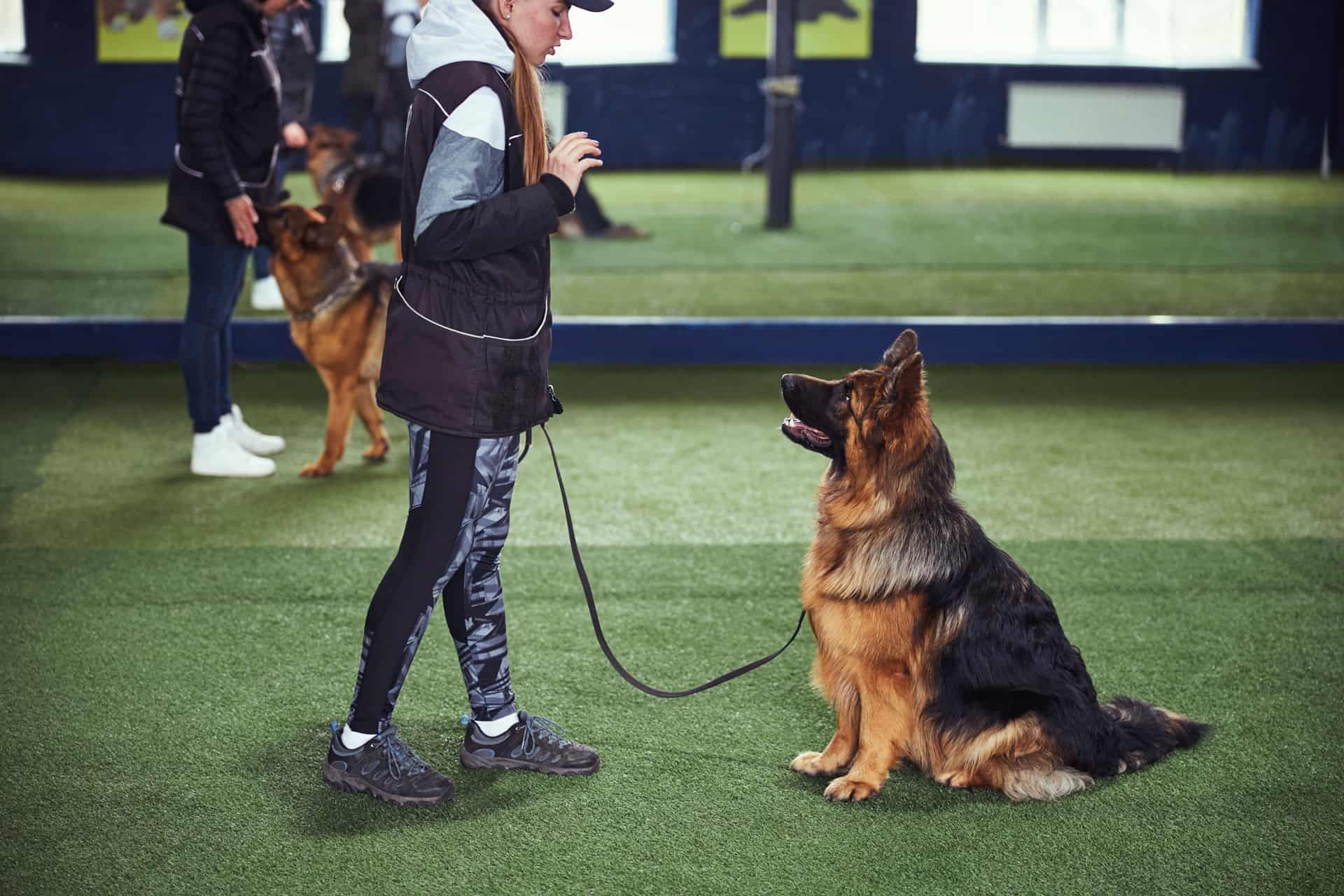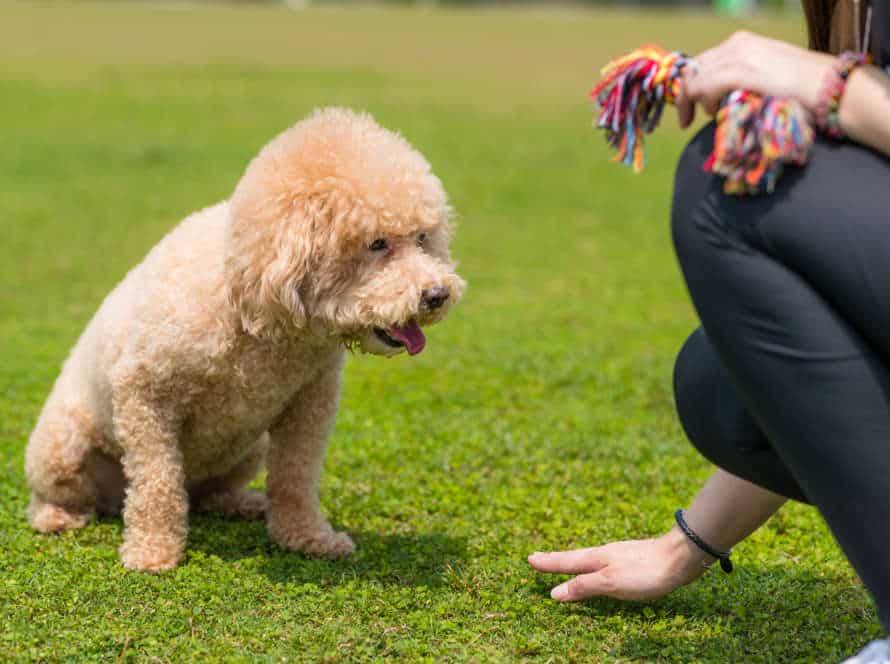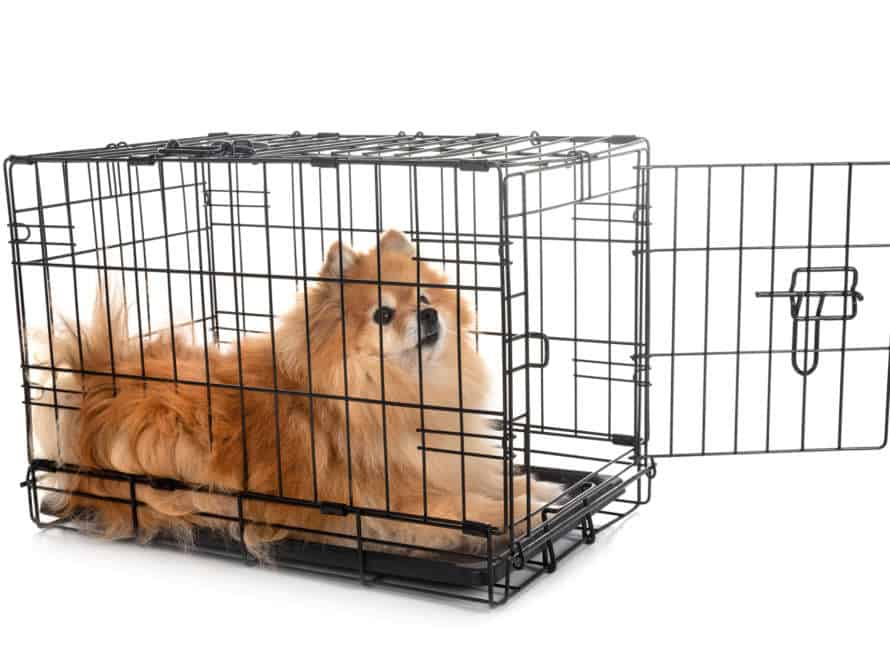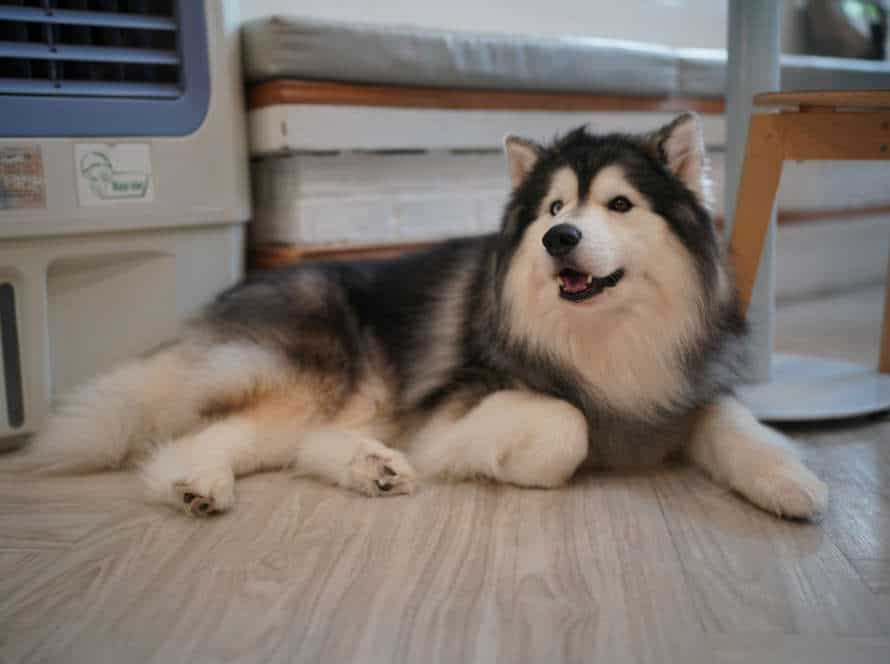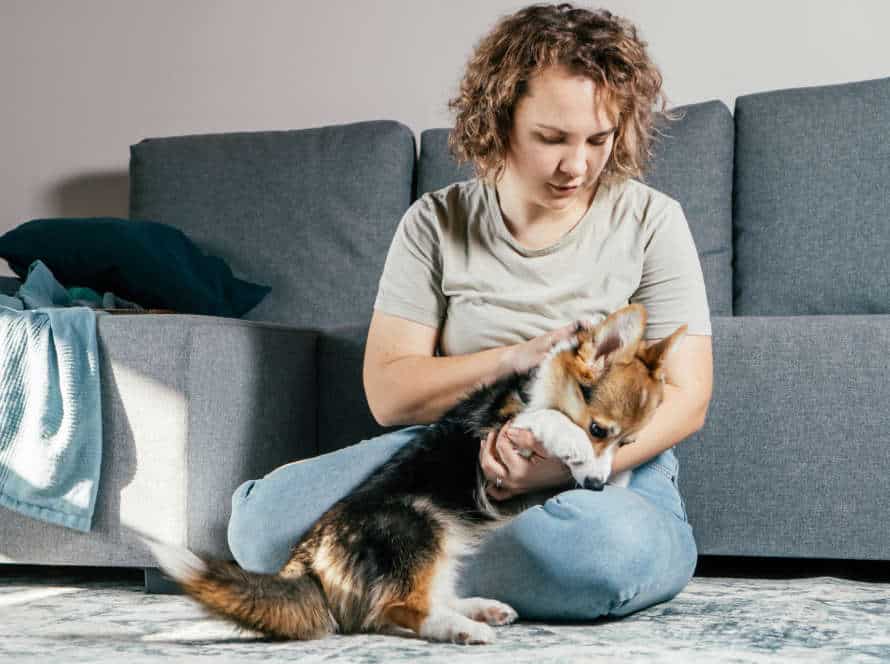Incorporating the Stay Command into Everyday Life
The “stay” command is a must-have obedience skill for improving your pup’s behavior and security. Here are some tips on how to include this command in your daily life with your furry little pal:
- Mealtime – Train your dog to stay in a specific spot while you prepare their food, and until you let them eat.
- At the entrance – Teach your dog to stay in one place when you welcome guests or collect your mail.
- Crossing the street – Teach your dog to stay at the curb, until you give them the go-ahead to cross.
- During walks – Train your pup to stay when you pause at a street corner or wait while you clean up their mess.
Be sure to stay consistent with your training and reward your dog with treats and lots of positive reinforcement. Including the “stay” command in daily life can help keep your pup safe and enhance their overall behavior.
Teaching the Stay Command
Teaching your pup the ‘stay’ command? A great way to do it! It’ll help them stay put in distracting situations, or when you’re far away.
Teaching your pup the ‘stay’ command is easy. Let’s look at how to do it! Here are different aspects of this command and the best way to teach it – here they are!
Understanding the Stay Command
The ‘Stay‘ command is a must-have in your dog training toolbox. It teaches your pup to stay put while you do other things. Here’s a guide on how to teach it:
- Start with Sit: Your pup must first learn Sit before Stay.
- Give the command: Say ‘Stay‘ firmly and hold your hand up for a few seconds.
- Reward: After staying for a bit, give your pup a treat, pet, or kind word.
- Increase time: Gradually increase the time that your pup stays in one position, and reward them each time.
- Incorporate it into everyday life: Use the Stay command when entering a room, greeting people, or during grooming/vet visits. This reinforces the training.
Be patient and consistent. Stick to 5-10 minute sessions and repeat them daily.
Identifying the Right Time and Place to Teach the Stay Command
The stay command is an essential skill for dogs. It helps pet owners train their dogs and keeps them safe. Find the right time and place to teach it. Incorporate it into daily life to reinforce obedience.
Here are tips to remember:
- Start with short periods and increase.
- Use treats and praise to reward staying.
- Incorporate it into everyday routines.
- Practice in a quiet, distraction-free environment first.
- When training outdoors, use a leash for safety.
- Be patient, consistent and positive when teaching the stay command.
How to Teach the Stay Command to Your Dog
Teaching your pup the stay command is a great way to strengthen your bond. Here’s how:
- Command your pup to sit or lie down.
- Say “stay” in a confident voice.
- Step back, keep eye contact.
- If they stay, step back and reward them.
- Increase the distance and stay duration gradually.
- Use the stay command during meals, walks, and activities.
Pro Tip: Don’t repeat stay; use hand signals and other cues instead.
Practicing the Stay Command in Everyday Life
Stay command? Wow! It’s essential for both you and your pup.
You’ll gain trust with your doggo, plus help ’em stay focused when there’re distractions. Using the stay command gives structure and consistency to training. Let’s learn more and how to practice it in everyday life.
Using the Stay Command on Walks and Outings
The “Stay” command can be great for walks and outings. Use it daily for a better relationship with your pup! Here’s how:
Walks: Utilize the command at intersections or when meeting other dogs. Keep your pup safe by making them stay!
Outings: Keep your dog away from tables and people with the command when at outdoor cafes.
Everyday life: Use the command when cooking or putting on shoes. This will help keep your pup out of the way!
Tip: Practice the “Stay” command at home first. Build up the duration over time to make your pup more comfortable with it.
Incorporating the Stay Command into Mealtime
The “Stay” command is awesome for everyday life. Here’s how to use it during mealtimes:
- Start by telling your pup to “Stay“. Then, put their food bowl on the floor.
- If they stay in place, give the “Okay” signal to approach the bowl.
- If they try to go before “Okay”, say “No” or “Uh-uh” and take them back to their spot.
- Gradually increase the time they must stay in one place. Do this with treats, leashes, and when opening the front door, too!
The goal of the “Stay” command is to make your pup more behaved and strengthen the bond between you.
Using the Stay Command During Grooming or Vet Visits
Use the “Stay” command when grooming or at the vet’s. This helps your pet stay calm. Practice it everyday. Here’s how:
- Start with short times. Increase duration as your pet gets comfortable.
- Reward your pet with a treat or praise when they follow the command.
- Do it in different places and situations.
- Once the pet knows the command, use it for grooming and vet visits.
Pro tip: Practice regularly to help reduce pet’s stress in new situations.
Troubleshooting Common Issues with the Stay Command
The Stay Command can be useful for dog owners. But, it can be tricky to get it right. Patience and practice are key. Distractions can also be a problem. Plus, reinforcing proper behaviour during training is important. Let’s look at common problems and ways to solve them:
Tips for Dealing with a Dog Who Won’t Stay
Training your pup to remain in one spot is a key skill for their safety. Yet, some doggos may struggle to understand or obey the stay command. Here are some tips to help:
- Simple and short: Start with a few seconds of sit and stay. Then, gradually increase duration and distance.
- Positive reinforcement: Give treats, toys, or praise when they obey correctly.
- Avoid distractions: Begin in a silent, familiar space. Then, raise the level of distraction as your pup is more confident with the stay command.
- Make it fun: Use a playful tone and include their favorite activities, like fetch or tug-of-war.
Incorporate the stay command into everyday life. Use it when putting on the leash, serving meals, or greeting visitors.
Pro tip: If your doggo is still having trouble, consult a professional dog trainer for tailored advice.
Addressing Issues with Duration
Having trouble training your pup to stay? Here are some tips to help you out!
- Start small. Begin with short stays and work up to longer ones, helping your dog build up attention span.
- Use positive reinforcement. Treats, toys or verbal praise are great incentives for staying in place.
- Minimise distractions. Train in a quiet environment; then, as your pup improves, increase the level of distractions.
- End on a high note. Release your dog with a treat or praise.
Remember: consistency is essential! Be patient and stay positive – your pup will learn the stay command in no time.
Addressing Issues with Distractions
Train your pup to obey the stay command for their safety and good behaviour. Here’s how to fix common issues:
- Keep training regular and short.
- Increase the distance between you and your furry friend while practising the stay command.
- Reward them with treats or praise for good behaviour.
- Tackle any underlying behaviour issues that could be affecting their stay command.
Incorporate the stay command into your everyday life, like before giving them food or going out. This will help them stay focused and ignore distractions.
Advanced Applications of the Stay Command
Gain control in daily life using the stay command! Not only for basic obedience, but also for advanced applications. Maximize efficiency and safety with this command. From having a well-behaved pet to completing household tasks, the stay command is a great way to do it.
Using the Stay Command for Agility Training
The Stay command is very important in agility training. It can also be used in everyday life, to enhance obedience and safety. Here are some advanced uses of the Stay command:
- Long-Distance Stay: Teach your dog to stay in a spot far away, like in a park or a field. This is useful for dogs who chase prey easily or for outdoor activities.
- Stay and Return: Add the Stay command to the recall training. Have your dog stay and wait for your return or re-call.
- Stay and Wait: Incorporate Stay into daily situations, such as waiting at the door or car, crossing roads, or waiting for food.
Using the Stay command in daily life can help you and your dog communicate better and trust each other more. Pro tip – Give your dog treats and praises when they obey the Stay command. It reinforces good behavior.
Applying the Stay Command for Service Dog Work
The “stay” command is a must-have for service dogs. Use it in your pup’s daily life! Here are some more advanced applications:
- Keep your pup in place when visitors come to the door.
- Use “stay” before taking off the leash. This helps prevent bolting.
- Train your dog to stay for different lengths of time to improve self-control.
- Teach them to stay in stressful environments, like a vet clinic.
- Combine the “stay” command with other commands, like “sit” and “down”, for extra control.
“Stay” requires lots of practice, patience and consistency. Start in a low-stimulation area and increase difficulty over time. Always reward good behavior!
Incorporating the Stay Command into Search and Rescue Training.
The stay command is a great way to get your pup to obey. It can be used in everyday life and advanced search and rescue training.
In search and rescue, this command makes sure your pup is in a safe spot while you search an area or communicate with rescuers.
In daily life, the stay command can be used when crossing the street or meeting new people/pets.
Here are some tips:
- Teach your pup the basic sit and stay commands.
- Gradually increase the duration and distance of the stay command.
- Use treats and praise as positive reinforcement.
- With practice and patience, your pup will learn the command.
Pro Tip: This will also improve their relationship with you!
Frequently Asked Questions
1. What is the Stay command?
The Stay command is a training technique used for dogs to stay in one place until they are released. It is an essential command that every dog should learn.
2. Why is the Stay command important?
The Stay command is essential for keeping your dog safe. It helps prevent your dog from running into traffic, chasing after other animals, or getting into any dangerous situations. Moreover, it helps to control your dog’s behavior when guests come over or during walk time in public spaces.
3. How can I incorporate the Stay command into everyday life?
You can practice the Stay command during meal time, playtime or when you are watching TV. Also, you can use it during grooming, vet visits, or even car rides. By practicing the Stay command regularly, your dog will learn to follow it during various situations.
4. How long should I train my dog to stay?
You should start training your dog for a few seconds initially and gradually increase the time until your dog can stay for several minutes. However, training too long too soon can frustrate and stress your dog. So, be patient and try to follow a systematic training plan.
5. What are some tips for teaching the Stay command?
Use short and concise commands, offer treat rewards, and use a firm and confident tone of voice. Also, make sure you practice in a distraction-free environment as this helps your dog concentrate on the training. Lastly, keep the training sessions short and fun.
6. What should I do if my dog does not follow the Stay command?
If your dog does not follow the Stay command, do not punish him, instead encourage and reward him for trying. Go back a few steps and try again. Eventually, your dog will get the hang of it with consistent practice.

